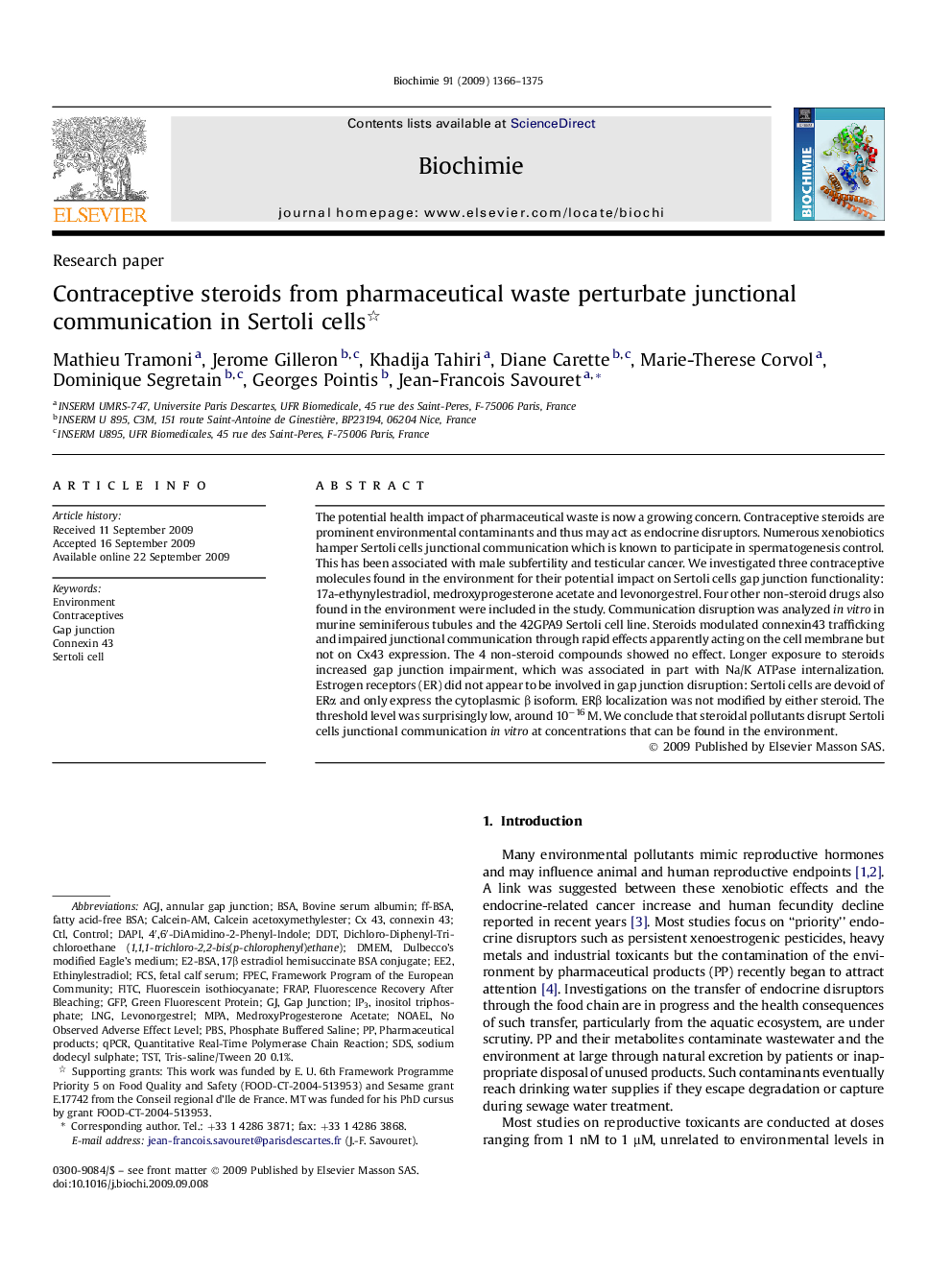| Article ID | Journal | Published Year | Pages | File Type |
|---|---|---|---|---|
| 1952313 | Biochimie | 2009 | 10 Pages |
The potential health impact of pharmaceutical waste is now a growing concern. Contraceptive steroids are prominent environmental contaminants and thus may act as endocrine disruptors. Numerous xenobiotics hamper Sertoli cells junctional communication which is known to participate in spermatogenesis control. This has been associated with male subfertility and testicular cancer. We investigated three contraceptive molecules found in the environment for their potential impact on Sertoli cells gap junction functionality: 17a-ethynylestradiol, medroxyprogesterone acetate and levonorgestrel. Four other non-steroid drugs also found in the environment were included in the study. Communication disruption was analyzed in vitro in murine seminiferous tubules and the 42GPA9 Sertoli cell line. Steroids modulated connexin43 trafficking and impaired junctional communication through rapid effects apparently acting on the cell membrane but not on Cx43 expression. The 4 non-steroid compounds showed no effect. Longer exposure to steroids increased gap junction impairment, which was associated in part with Na/K ATPase internalization. Estrogen receptors (ER) did not appear to be involved in gap junction disruption: Sertoli cells are devoid of ERα and only express the cytoplasmic β isoform. ERβ localization was not modified by either steroid. The threshold level was surprisingly low, around 10−16 M. We conclude that steroidal pollutants disrupt Sertoli cells junctional communication in vitro at concentrations that can be found in the environment.
